Description of yoshta and the best varieties of this plant
| Content:
|
Yoshta is an unusual berry crop from the Gooseberry family. Its fruits combine the best tastes of blackcurrant and gooseberry. Unlike these plants, yoshta berries are much larger, and there are no thorns on the bushes.Its resistance to pests and severe frosts, vitality, drought resistance, high decorative value, numerous medicinal properties, versatility in use - all this has led to great popularity and respect among professional gardeners and simply lovers of garden crops.
|
Many varieties of yoshta are very productive |
This article describes in detail the best varieties of yoshta with photographs and reviews of gardeners who are already growing it on their plots. In addition, recommendations for growing and caring for yoshta are given.
What is Yoshta plant description
This beautiful and useful hybrid perennial was bred as a result of the painstaking and lengthy work of dozens of German scientists and breeders. The average height of an adult bush reaches one hundred and fifty centimeters, the diameter is from one and a half to two meters. A feature of the crop is its undemanding nature when choosing a planting site, non-shedding of berries when ripe, and intensive growth. The lifespan of the plant is from twenty to thirty years, depending on the conditions and climate.
|
Yoshta blooms with bright, rich yellow or milky white flowers, collected in racemes. |
Ripe fruits are colored black or dark purple and, like the flowers, are grouped into small clusters of three to five berries. The average weight of one berry is from three to five grams, the skin is dense, the pulp is juicy, and the taste is sweet and sour. From one bush you can harvest from seven to ten kilograms of crop.
Yoshta is grown not only as a fruit shrub, but also as a decorative hedge, in single and group plantings, in mixborders and flower beds. It is known for its medicinal properties in official and folk medicine.In households, berries are consumed not only fresh, but also processed. Jams, compotes, liqueurs, wine, juices, and jams are prepared from them. Yoshta is added to desserts and baked goods, yoghurts and ice cream, and is also frozen and dried. The value and taste of the berries are preserved in any form.
Yoshta varieties
EMB
|
In the photo, a vigorous variety of Yoshta of British origin is distinguished by long flowering (for one and a half months), high drought resistance and abundant fruiting. |
The culture adapts well to the conditions of the Moscow region and the Middle Zone, but in the southern regions it shows its full potential.
- The height and width of the bush is from one hundred and fifty to one hundred and eighty centimeters.
- It begins to bear fruit in the third or fourth year after planting.
- High yield - more than eight kilograms per bush.
- Purple-black oval berries have a sweet-sour taste and pleasant aroma, with small seeds inside. Average weight is from three and a half to five grams.
- Endowed with resistance to anthractic blight and septoria, firmly resists powdery mildew and mites.
- Withstands frosts up to thirty degrees and above.
Crown
|
The upright Swedish variety joshta is suitable for landscaping and creating hedges. |
This variety is in demand as an ornamental shrub because of its gorgeous flowering, beautiful green and lush foliage, non-shedding fruits and as a very useful vitamin crop. It is unpretentious when grown.
- The average height is one and a half meters. There are no thorns on the shoots.
- The first fruiting occurs in the fourth year after planting.
- For a more generous harvest, it is recommended to plant gooseberries or black currants next to the yoshta.
- The yield is average - from three and a half to six kilograms per bush.
- The average weight of one berry is about three and a half grams. The skin is dense, smooth, the color is deep black, the taste is sweet and sour, the aroma is nutmeg.
- The variety is resistant to a number of diseases.
- It is recommended for cultivation in the Kuban and other southern regions, but its high resistance to frost allows this variety to be planted in the central zone, the Moscow region, and the Leningrad region.
Ojebin
|
In the photo, a low-growing variety of yoshta, originally from Sweden, gives its beautiful flowering and abundant fruiting for ten to fifteen years. |
Prefers open sunny areas with fertile, moderately moist soil. Plants do not require special care.
- The average height of an adult crop is about seventy centimeters.
- In the third year after planting, the seedlings begin to bear fruit.
- To increase productivity, it is recommended to plant yoshta next to black currants and gooseberries.
- When planting several bushes in one area and high yields, you can provide the whole family with healthy berries and vitamins until the next season. Each bush produces about four kilograms of fruit.
- The berries ripen in mid-summer, each weighing from one and a half grams, the taste is sweet and sour, the color is black with a slight waxy coating. The skin is thin, the flesh is aromatic. The fruits are distinguished by good preservation and ability to be transported.
- The variety is resistant to diseases characteristic of fruit bushes (anthracnose, powdery mildew).
- Frost resistance is high, recommended for growing in the Moscow region.
Rext
|
Rext is a hardy and high-yielding domestic variety with strong immunity and vitality. |
Its popularity lies in its versatility in use and unpretentiousness when grown in various climatic conditions.The culture is capable of producing high-quality harvests in both the southern and northern regions.
- The height of the bush is from one hundred thirty to one hundred and fifty centimeters.
- A fast-growing variety that bears the first fruits already in the third year after planting the seedling.
- For better fruiting, black currants or gooseberries are planted as neighbors.
- The yield is high - about eight kilograms per crop.
- The weight of one black oval berry is from three and a half grams. The pulp is juicy and sugary, the seeds are small, the aroma is reminiscent of currants. Overripe fruits begin to dry out and fall off.
- Strong immunity protects plants from various types of spotting, fungal and viral infections, as well as from the main pest - the bud mite.
- The variety tolerates cold and sub-zero temperatures down to twenty-eight to thirty degrees.
Triton
|
A tall variety with slightly spreading shoots, it is characterized by good transportability of fruits and versatility in use. Plants are recommended for cultivation on an industrial scale. |
In the northern regions, you can get consistently good yields, but the variety will demonstrate its maximum potential in southern latitudes, for example, in Kuban.
- The height of the fruiting bush is about two meters.
- The first harvest can be harvested in the third year.
- About ten kilograms of berries are harvested from one bush, which ripen at approximately the same time.
- Large black berries of a round shape with a shiny surface have a thick skin and juicy sweet and sour pulp.
- The variety is resistant to pests and diseases.
- Easily withstands harsh snowless winters with frosts up to twenty-six to thirty-two degrees.
Don't forget to read:
Garden blueberries: planting and care ⇒
Blueberry varieties for growing in the garden with descriptions and photos ⇒
Yohini
|
Yohini is one of the best and highest-yielding varieties of Yoshta from Germany. |
The bush consists of straight shoots with currant-like bark, wide wrinkled leaves like a gooseberry, and attractive white flowers.
- The culture often reaches two meters in height and one hundred and fifty centimeters in width.
- Preferred pollinators are gooseberries and currants.
- The yield is stable - about nine kilograms per plant.
- The berries are round, dark blue, very sweet, with a dessert taste and pleasant aroma, about four grams each.
- The variety is resistant to major diseases and pests.
- Winter hardiness is high. Moscow region, Middle Belt and Kuban - recommended for planting and growing.
Don't forget to read:
How does a raspberry tree differ from a regular raspberry and how to care for it ⇒
Moro
|
The tall, columnar variety prefers open sunny areas and moderate soil moisture. |
With a lack of moisture, a long absence of precipitation and high air temperatures, the fruits stop growing and begin to dry out. The most favorable conditions for growing this variety are the Middle Belt, Moscow region, Moscow and Leningrad regions, and many other regions with a temperate climate.
- The average height of a mature bush is from two to two and a half meters.
- The first fruiting occurs in the second or third year after planting.
- The variety is partially self-pollinating, but to increase productivity it is recommended to plant black currants and gooseberries next to the yoshta.
- One bush produces ten to twelve kilograms of berries.
- Very large dark purple-black fruits resemble cherries in size and taste like ripe gooseberries.The sweet and sour pulp has a nutmeg aroma, the skin is dense, with a waxy coating. After ripening, the berries do not fall off and hold tightly to the stalks.
- The variety is resistant to fungal and some viral diseases, as well as bud mite.
- The level of winter hardiness is high.
Features of growing yoshta
Selecting a location
Yoshta takes root well in any area and is not afraid of sharp gusts of wind, thanks to its highly branched root system. Therefore, for planting you need and can choose a flat, open area with good sunlight. Loams with a neutral acidity level are suitable.
Favorable dates for planting
It is recommended to plant seedlings at the end of April - at the beginning of May or in the first half of October. It all depends on the climatic conditions of your area.
Soil preparation
The area must be dug up with a shovel in advance and nutrient mixtures added. For each square meter you will need about one hundred grams of superphosphate, fifty grams of potassium sulfate and one bucket of organic matter. A few days or a week before planting, potassium sulfate (fifty grams), superphosphate (one hundred grams), organic fertilizers - for example, a mixture of compost with humus (three to four kilograms) and one glass of wood ash - are added to the planting holes.
Landing scheme and features
If yoshta is planted as a green hedge, then the interval between seedlings is no more than fifty centimeters. To produce healthy and tasty berries, plants need space and sufficient light and heat. In this case, a distance of one and a half to two meters is left between plantings.
|
Yoshta should be fed with the same fertilizers as currants and gooseberries. The culture is very disease resistant and requires minimal care. . |
The hole, previously half-filled with nutrient substrate, is filled with one bucket of water, and a small amount of earth is poured in the form of a mound. A young bush is placed on it, the roots are spread throughout the entire volume of the hole, sprinkled with soil, carefully compacted and watered again. The tree trunk circle is covered with mulch made from straw, sawdust, humus or peat.
Rules of care
Caring for yoshta plantings involves regular watering and weeding, periodic fertilizing and preventive spraying, as well as pruning damaged and dried parts.
Reviews from gardeners
The yoshta bush is quite spreading and tall, the leaves are similar to gooseberry leaves, but there are no thorns over which German breeders have been struggling for forty years. The berries, rich in vitamins, are very sweet, do not have hard seeds and the sourness characteristic of gooseberries. True, after being removed from the bush and kept at home without a refrigerator, they acquire a slight astringency and bitterness. In appearance they look more like gooseberries, but upon closer inspection they vaguely resemble giant black currants. They are removed from the bush quite easily. katyushka237
I am a huge fan of sour berries))) I love black currants, and I have also loved gooseberries since childhood))) Several years ago, a new bush was planted in the garden under the interesting name “Yoshta”... Yoshta is a mixture of gooseberries and black currants... The berries are medium in size, just the middle ground between gooseberries and currants)))) The taste is quite interesting: yoshta has a characteristic sourness from currants, and from gooseberries, its inherent sweetness))) Gooseberries have more leaves than their “parents”... But the bush produces less fruit... Yoshta makes good jam, compotes... But in general, our family always eats it fresh, when it is full of healthy vitamins))) oks - 2303
I want to talk about my favorite bush - a hybrid of black currant and gooseberry - Yoshta. For a long time I honestly considered it a currant... And this is really my favorite at the dacha - every year this huge bush is showered with large black berries... It’s been like this for many years. I don't remember a year without a harvest. The berries are large, black, very tasty, I eat them until November. Whatever was not picked is delicious even in late autumn. We don’t take care of the bush in any way, only every year I clean it a little - I cut off the old branches, freshen it, that’s all the care. And the harvest is amazing every year! It blooms very beautifully - when in bloom, the bush is all bright yellow. Children went not far from it - so it’s easy to start it in the country, it’s unpretentious. I recommend to all. Unlike the delicate gooseberry, which is constantly sick and needs special care, the yoshta was never sprayed, and it never got sick. Stalker-Lg
Yoshta currants were purchased for decorative purposes - for a hedge; I really liked the outline of the bush and the bright flowers in the photo.But in the second year it turned out that the hybrid actually produces sweet, tasty berries, even without pollinators. To increase the yield, we planted black currants nearby, and now we harvest at least 7 kg annually. Fedulova Anna Grigorievna, 50 years old, Tver
A hybrid of black currants and gooseberries, Yoshta, has been growing at our dacha for a long time. I really love these berries for their unique sweet and sour taste. They are slightly larger than regular gooseberries. We make jam, compotes, and juice from these berries. It is known that these berries contain many vitamins that are beneficial for vision, hair, and skin. Sometimes in the summer I make myself a face mask from these berries. The effect is wonderful. The skin is moisturized, smoothed, and acquires a beautiful shade. I recommend everyone who has a summer house to grow yoshta on their plot. Vladlena
You might be interested in:
- The best varieties of serviceberry with descriptions, photos and reviews from gardeners ⇒
- The best varieties of edible honeysuckle with large berries ⇒
- Description of the best gooseberry varieties with photos and reviews ⇒
- 15 best varieties of blackcurrant with photos and descriptions ⇒
- Description and photo of the 20 best varieties of thornless garden blackberries ⇒
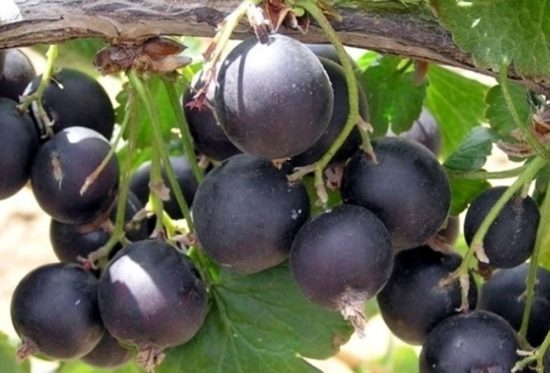
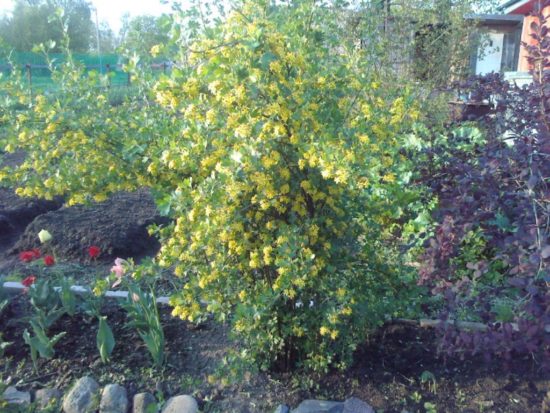
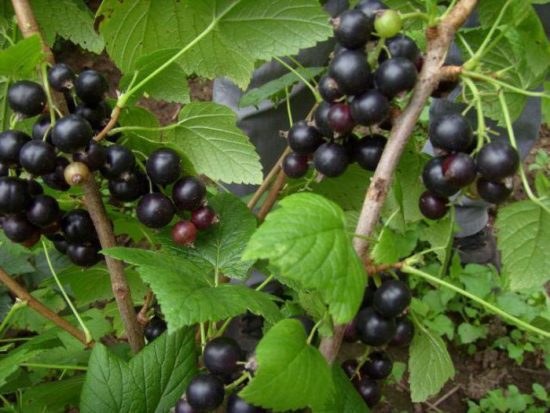
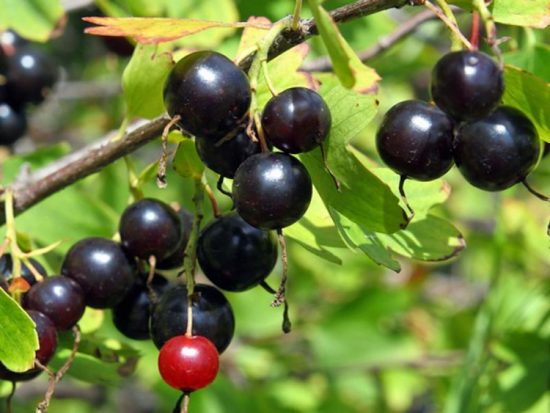

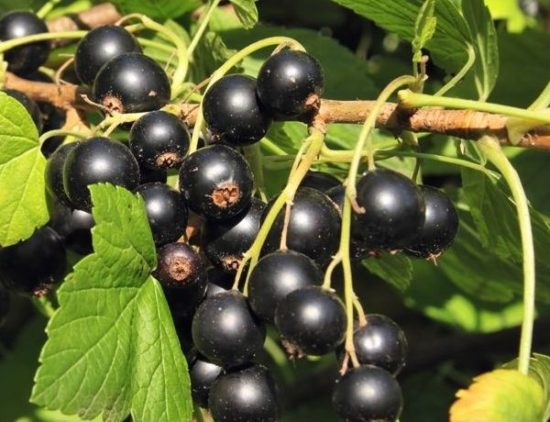
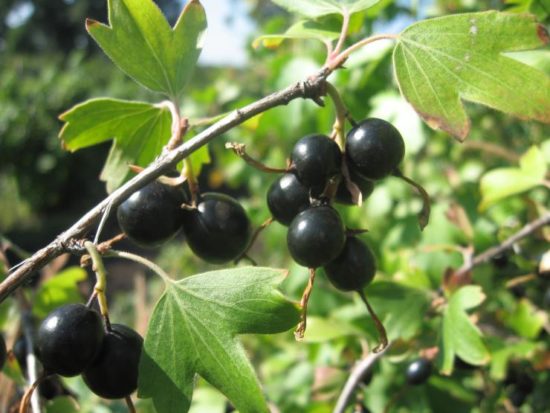
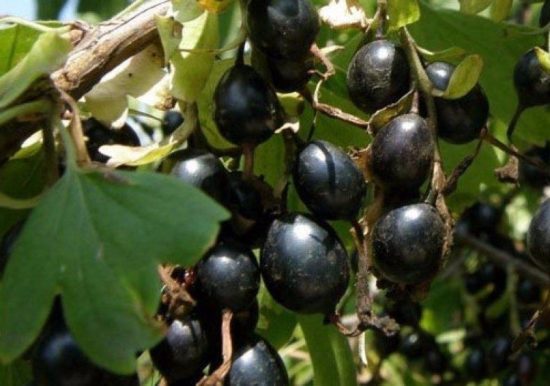
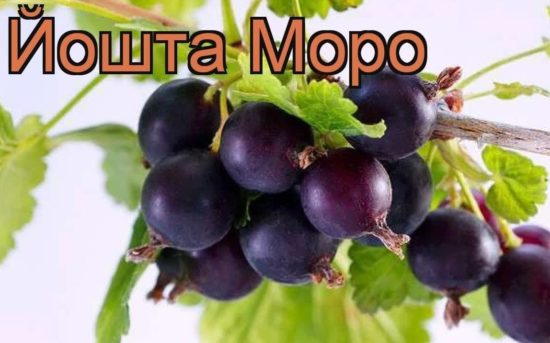
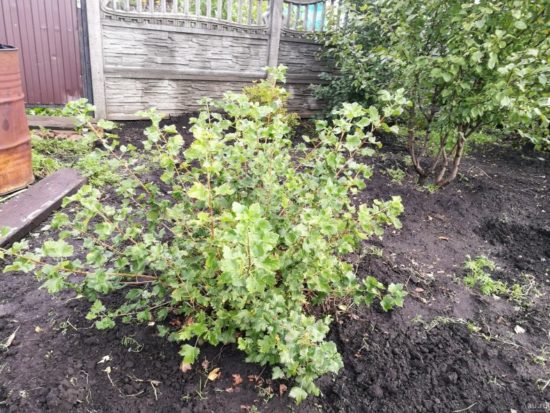

 CUCUMBERS NEVER GET SICK, I'VE BEEN USING ONLY THIS FOR 40 YEARS! I SHARE A SECRET WITH YOU, CUCUMBERS ARE LIKE THE PICTURE!
CUCUMBERS NEVER GET SICK, I'VE BEEN USING ONLY THIS FOR 40 YEARS! I SHARE A SECRET WITH YOU, CUCUMBERS ARE LIKE THE PICTURE! You can dig a bucket of potatoes from each bush. Do you think these are fairy tales? Watch the video
You can dig a bucket of potatoes from each bush. Do you think these are fairy tales? Watch the video
 How our fellow gardeners work in Korea. There is a lot to learn and just fun to watch.
How our fellow gardeners work in Korea. There is a lot to learn and just fun to watch. Eye trainer. The author claims that with daily viewing, vision is restored. They don't charge money for views.
Eye trainer. The author claims that with daily viewing, vision is restored. They don't charge money for views. A 3-ingredient cake recipe in 30 minutes is better than Napoleon. Simple and very tasty.
A 3-ingredient cake recipe in 30 minutes is better than Napoleon. Simple and very tasty. Therapeutic exercises for cervical osteochondrosis. A complete set of exercises.
Therapeutic exercises for cervical osteochondrosis. A complete set of exercises. Which indoor plants match your zodiac sign?
Which indoor plants match your zodiac sign? What about them? Excursion to German dachas.
What about them? Excursion to German dachas.